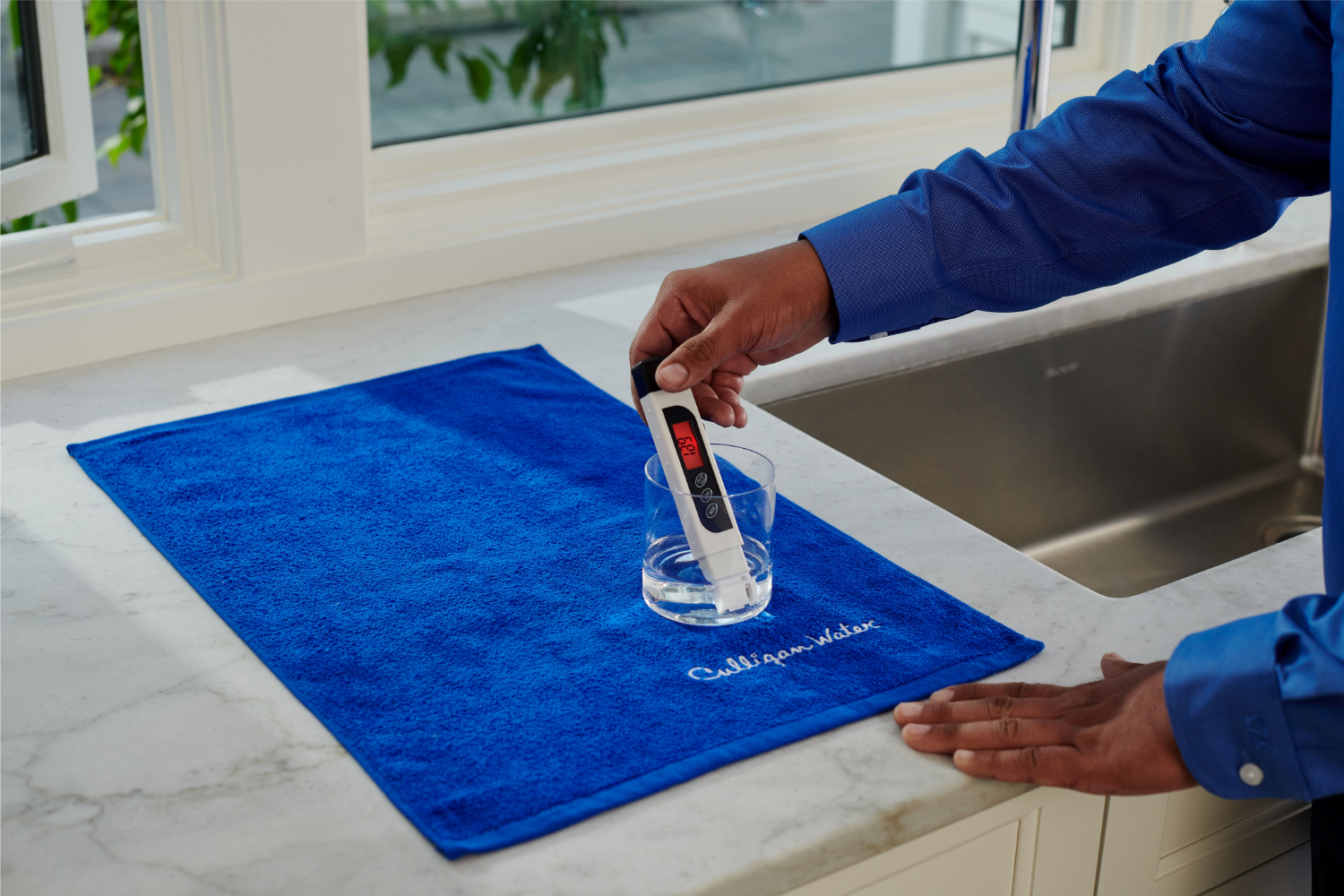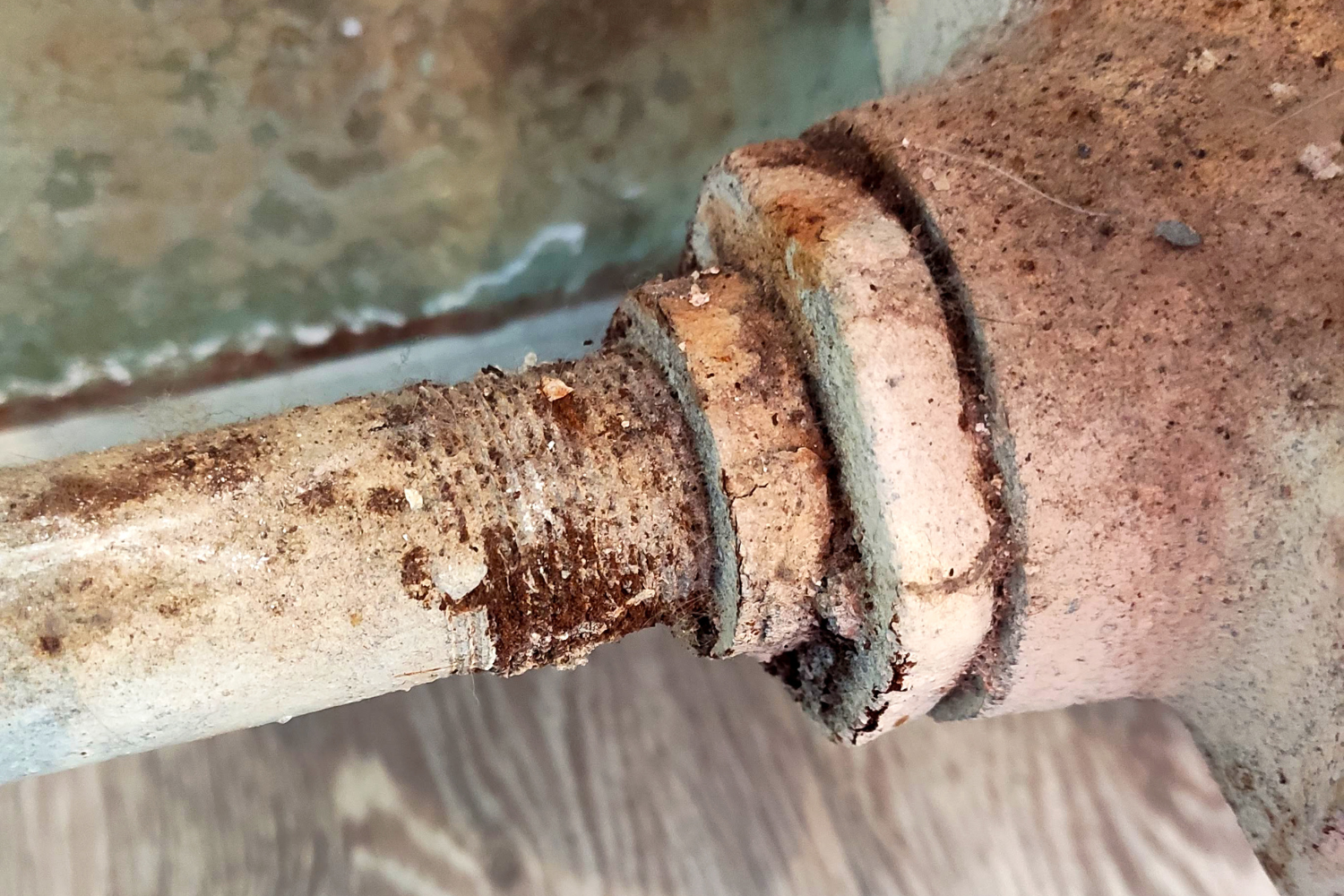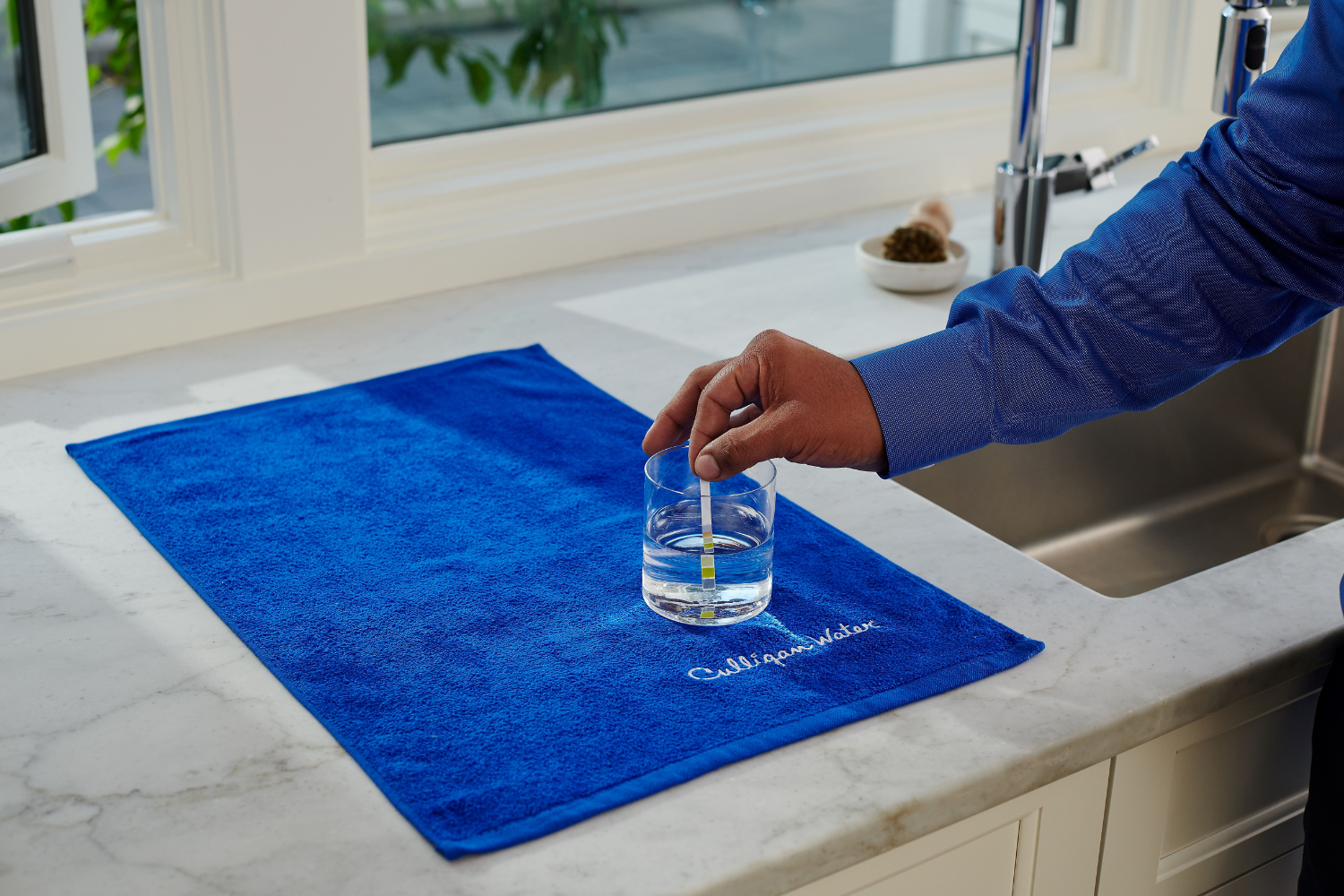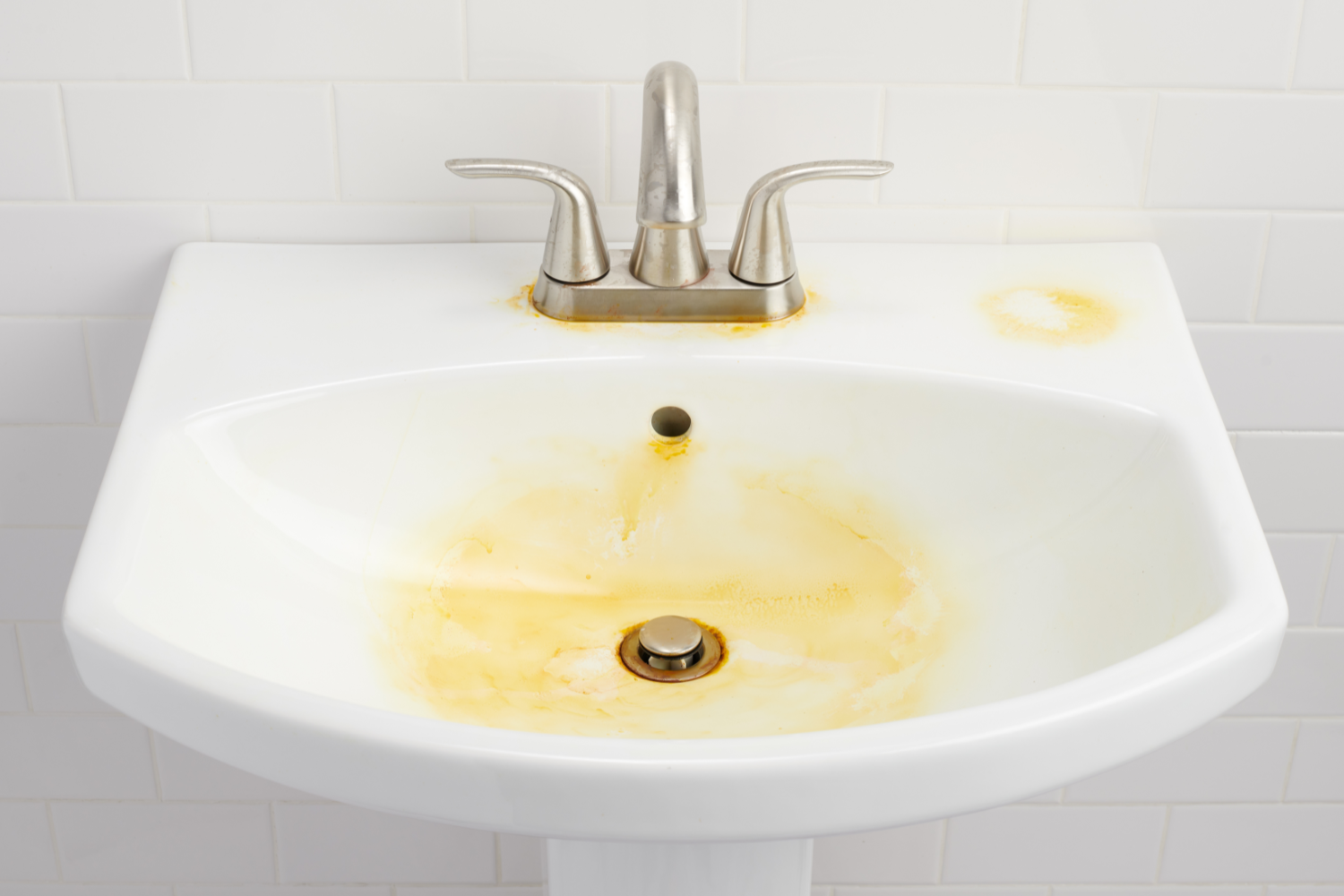Schedule Your Free In-Home Water Test
by Culligan Water of the Low Country

Free Water Testing
Water quality in your home or business is not something that should be taken lightly. Our water testing analysis is essential to knowing exactly what’s in your water. Culligan of the Low Country offers free in-home water testing by our trained and certified experts to Hilton Head, Savannah and surrounding areas. We recommend having your water tested annually.

Our experts test for the following:

Hard Water
Hard water can result in limescale buildup in faucets and showerheads, leave spots on your dishes, corrosion in your piping, as well as dry hair and itchy skin.

Total Dissolved Solids (TDS)
The recommended TDS level should stand below 500 milligrams per liter for best tasting water, as well as to avoid scaling.

High or Low pH Levels
The pH level in your water determines how much acidic water is in your home. Acidic water can cause your pipes to corrode, leading to metals to dissolve into your home’s water supply.

Chlorine
Chlorine is used to reduce waterborne bacteria, however excessive levels of chlorine in your water can lead to strong odors and bad tasting water.

Iron
When iron levels are too high it can lead to your water having a metallic taste, staining of your sinks and bathtubs and can cause damage to your water-using appliances.

Nitrate
High levels of nitrate in your water can cause health issues, as scientific research has shown that nitrates reduce the ability of red blood cells to carry oxygen.
It’s worth knowing the effects of the hidden contaminates your water testing may be revealing.
Here are some of the most common water problems we find in the Hilton Head Island and Savannah areas:
Other situations you may want to consider a water test include:
Arsenic:
Arsenic enters the water supply naturally and as an industrial byproduct. The most concerning health risk posed by arsenic is low-level, long-term exposure via drinking water and–as a result–the possibility of increased occurrences of cancer and other health problems.
Magnesium:
Magnesium is a mineral that enters water when rain soaks into the ground, running through sand, soil, and rock before entering your house. The presence of magnesium creates hard water. Magnesium can build up in pipes and appliances, which will shorten their life spans. Buildup can lead to increased use of soaps and detergents, leading to dry skin, brittle hair, and increased energy costs.
Chlorine:
The taste and smell of chlorine is unpleasant, and it can dry out your skin and hair. Municipalities use chlorine to disinfect water, but you should filter out the chlorine before using it in your home, especially for drinking water.
Lead:
Lead seeps into the water supply from many lead pipes, solder and fixtures used across the United States. There is no safe level of lead exposure; even small amounts can cause a variety of long-term health problems in children, including brain damage.
Nitrates:
A major ingredient in most fertilizers, nitrates are essential for food, flowers, and greener lawns. Nitrates naturally occur in soil, but overuse of fertilizer is the largest cause of contamination. When spread on lawns and fields, nitrates can move quickly through soil and grow more concentrated in groundwater, creating potential health risks for everyone, especially infants and pregnant women.
PFOA and PFOS:
PFOA and PFOS are man-made chemicals that were once used in the manufacturing of industrial and consumer products. Prior to phasing them out of production, these chemicals were released into the environment and contaminated drinking water supplies, especially near manufacturing sites. The presence of these chemicals in drinking water may result in health issues including developmental effects, cancer, liver damage, immune disorders and thyroid imbalance.
